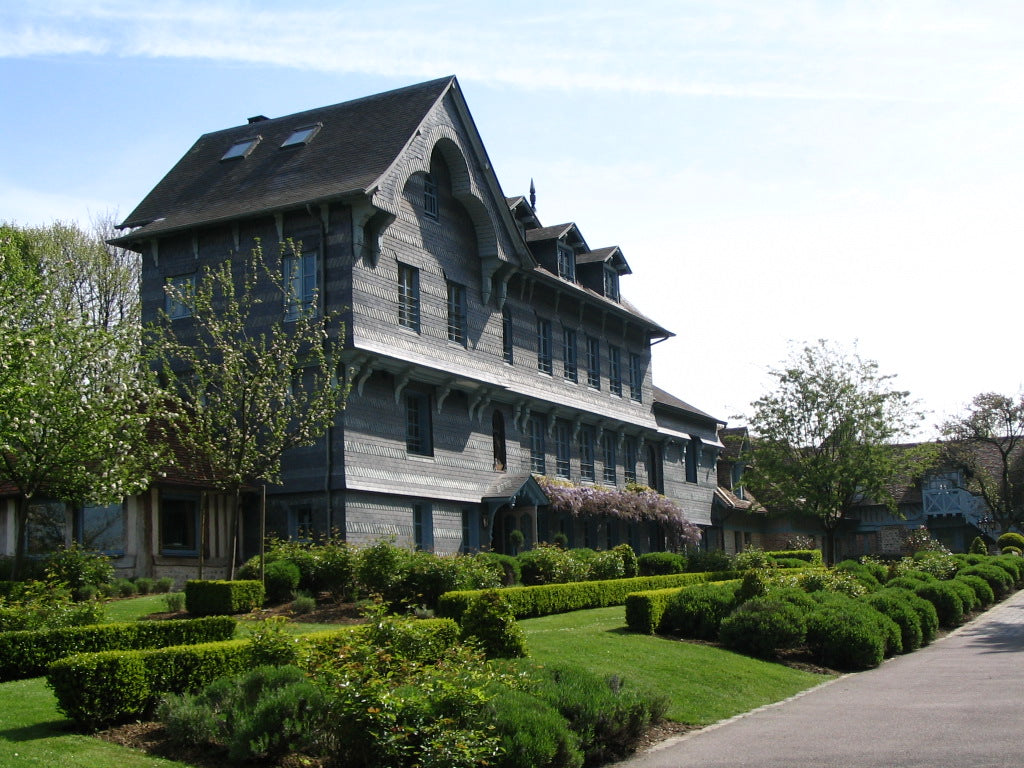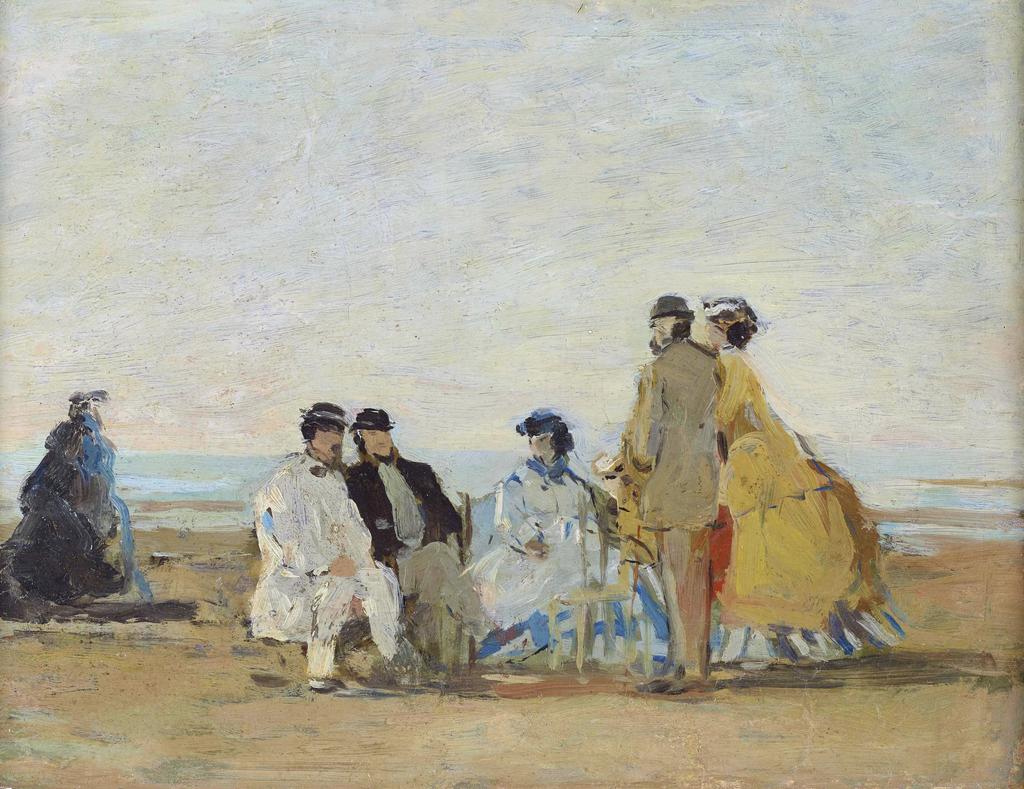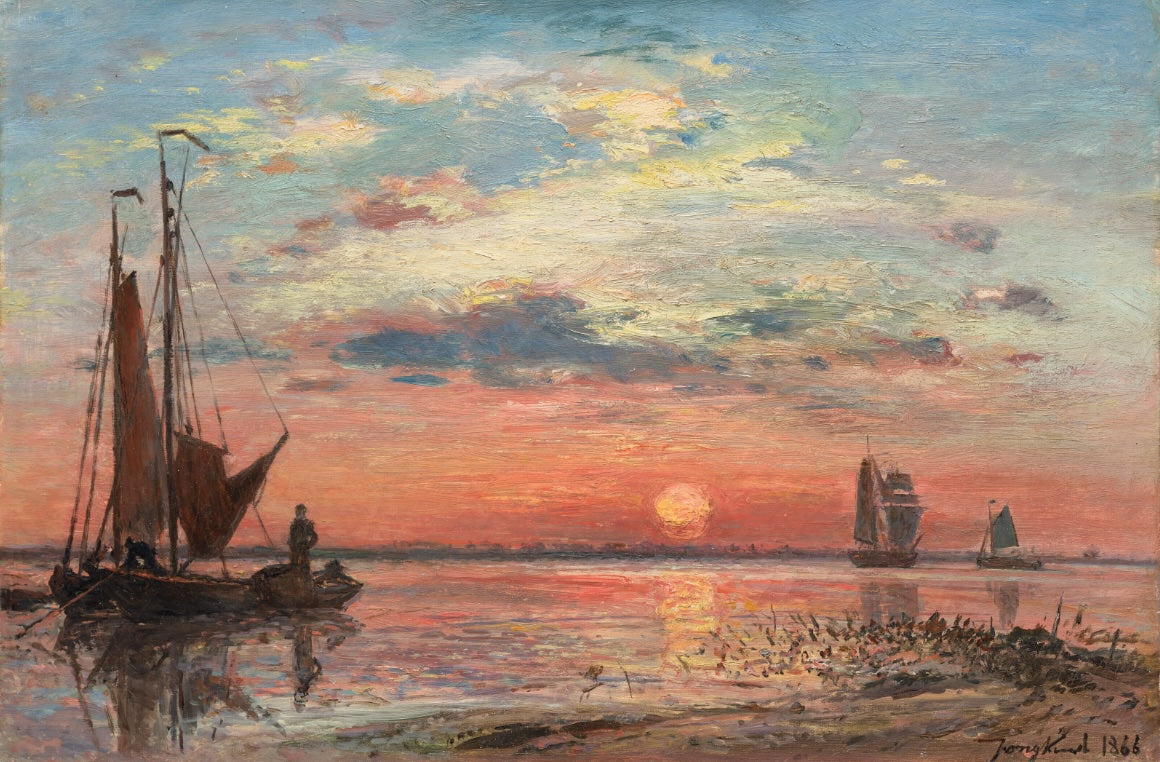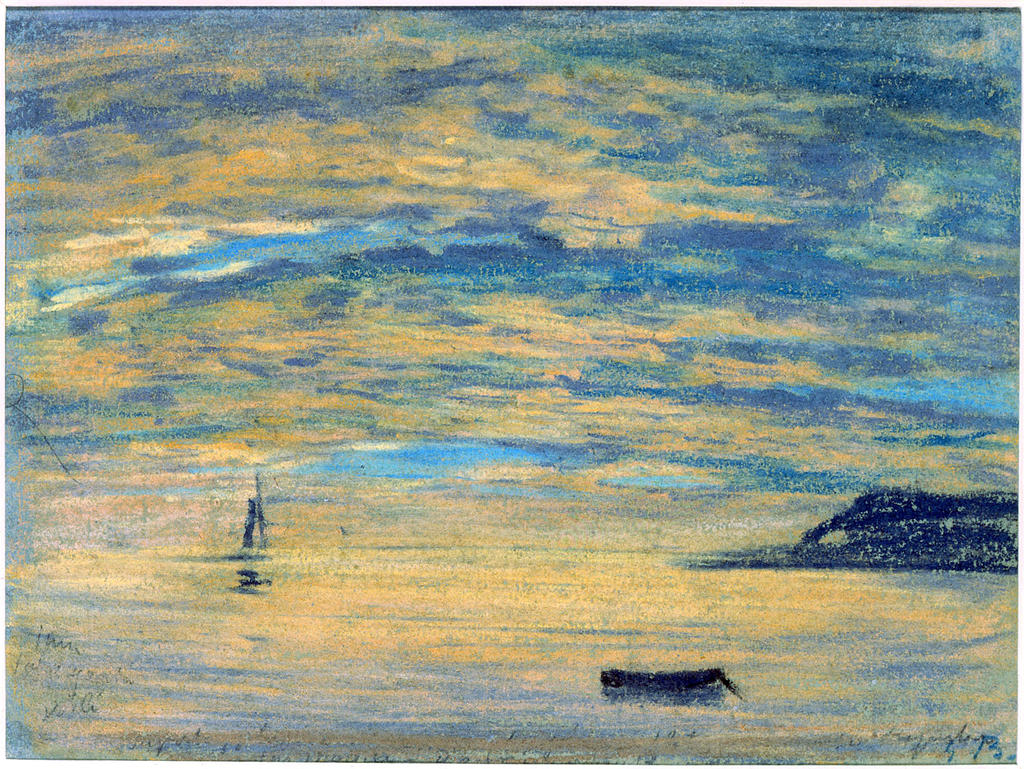

Honfleur, city of painters and jewel of Normandy
Honfleur charms with its cobbled streets, half-timbered houses, and famous Vieux Bassin lined with restaurants. The birthplace of Impressionism, the town inspired Monet, Boudin, and Courbet. Stroll among art galleries, traditional markets, and historic monuments, and let yourself be charmed by the unique atmosphere of this authentic port, between the Seine estuary and the Côte Fleurie.

From the 19th century
Home of artistic inspiration
From the beginning of the 19th century, Honfleur attracted many artists seduced by the light, the changing skies and the beauty of the port.
Eugène Boudin, a native of the town, played a fundamental role there: he brought together painters and poets, including Charles Baudelaire, and introduced Claude Monet to outdoor painting.
The Ferme Saint-Siméon became an essential meeting place for these artists, who stayed there regularly to paint on location.
This artistic center encourages the emergence of new styles and techniques, breaking away from academic painting.

precursors
Cradle of Impressionism
Honfleur is the scene of decisive encounters: Boudin, Monet, Jongkind, Dubourg, Cals, Corot, Courbet, Dufy, Signac, Seurat, Whistler, Friesz and many others set up their easels there, even if they were not all members of the “Honfleur school” in the strict sense.
Boudin's influence on Monet was decisive: Monet would later declare “If I became a painter, it is to Boudin that I owe it”.
These artists sought to capture light, the reflections of water, changing atmospheres, and to transcribe their emotions in the face of nature, thus laying the foundations of Impressionism .

Alive
Artistic heritage
The Eugène Boudin Museum houses many major works created in Honfleur, illustrating the diversity of styles and subjects addressed by the artists, from seascapes to scenes of daily life.
Honfleur remains a popular destination for contemporary and amateur artists today, perpetuating this creative tradition. Tours and exhibitions pay tribute to this history, such as the "In the Footsteps of Painters" tour offered by the Tourist Office.
In the 20th century, the tradition continued with the Académie Julian, which sent young artists to Honfleur every summer to work directly on the motif.

The influence of Honfleur
On Impressionism
Honfleur played a decisive role in the development of Impressionism as a true center of inspiration and encounters for 19th-century artists. Several factors explain this major influence:
An exceptional natural setting : The changing light of the Seine estuary, the shifting skies, and the landscapes of Honfleur's harbor fascinated painters. They found ideal subjects here for experimenting with outdoor painting, essential to the emergence of Impressionism.
La Ferme Saint-Siméon, a gathering place : This inn on the hills above the city was a meeting point for major artists such as Eugène Boudin, Claude Monet, Johan Barthold Jongkind, Gustave Courbet, and Charles-François Daubigny. They shared ideas there, painted together, and encouraged each other to explore new artistic paths.

The influence of Honfleur
On Impressionism
The central role of Eugène Boudin : Born in Honfleur, Boudin was a mentor to Monet and a catalyst for the movement. He introduced Monet to painting on location and gathered around him a community of artists and intellectuals, laying the foundations of Impressionism.
An avant-garde laboratory : In Honfleur, painters sought to translate their fleeting impressions of nature onto canvas, thus breaking with academic tradition. This collective and innovative approach fostered the birth of Impressionism, of which Monet would become the leader.
A living heritage : Honfleur is today recognized as one of the cradles of Impressionism, and many places in the town (museums, tours, exhibitions) still bear witness to this artistic effervescence.
In short, Honfleur offered future Impressionists a unique testing ground, a close-knit community and an inexhaustible source of inspiration, thus playing a key role in the emergence and spread of the Impressionist movement.

Emblematic places
For the impressionists
Honfleur is full of must-see sites that have marked the history of Impressionism and continue to attract art lovers and curious visitors following in the footsteps of the great masters.
Saint Simeon Farm
A legendary inn perched on the heights of Honfleur, the Ferme Saint Siméon was the main gathering place for Impressionist painters like Monet, Boudin, and Jongkind. They stayed there to capture the unique light of the estuary and paint from life. Today, the site offers exhibitions and events dedicated to this artistic period.
The Old Basin and the Port
Honfleur's port, with its narrow, colorful houses, was immortalized by many Impressionists, including Monet and Boudin. A stroll around the Vieux Bassin allows you to rediscover the landscapes painted by these artists and understand their fascination with the play of light and reflections on the water.

Emblematic places
For the Impressionists
Eugène Boudin Museum
This museum, located on Rue de l'Homme de Bois, houses a remarkable collection of Impressionist and pre-Impressionist paintings created in Honfleur and the surrounding region, including those by Boudin, Monet, Courbet, Dubourg, Friesz, and Dufy. It showcases the town's artistic heritage and its role in the emergence of Impressionism.
The White Horse Hotel
This historic hotel, located on the harbor, appears in several major works by Boudin and Monet. Room 332 is even said to have hosted Monet during his stays in Honfleur, the harbor view being a direct source of inspiration for his paintings.
“In the footsteps of painters” route
The Tourist Office offers a trail marked with panels depicting reproductions of paintings painted on site in the 19th century. This tour allows visitors to discover the exact locations where the Impressionists set up their easels, from the medieval town to the pier, including the Ferme Saint Siméon.
These places, always accessible, bear witness to the unbreakable link between Honfleur and the history of Impressionism, offering a unique immersion in the world of the painters who revolutionized modern art.

Famous works
Created in Honfleur
Honfleur has inspired many major painters, notably the precursors and figures of Impressionism.
Several emblematic works, created on site, bear witness to the city's influence on the history of art.
Eugène Boudin : Considered the “King of the Skies,” Boudin painted numerous views of Honfleur's harbor, fish markets, beaches, and seascapes. His works capture the changing light and atmosphere of the Normandy coastline. Many of his paintings are housed at the Eugène Boudin Museum.
Claude Monet : Monet painted several paintings in Honfleur, including views of the Vieux Bassin and the harbor, where he focused on capturing the reflections of the water and the variations in light. His time in Honfleur was decisive for the development of his Impressionist style.
Johan Barthold Jongkind : Jongkind, another major figure, painted seascapes and harbor landscapes, influencing the younger Impressionists with his treatment of light and atmosphere.
Louis-Alexandre Dubourg : Dubourg, a native of Honfleur, distinguished himself with his scenes of daily life, his fish markets and his landscapes of the port, immortalizing local life and the emblematic views of the city.
Other artists : Gustave Courbet, Raoul Dufy, Camille Corot, and Paul Signac also painted in Honfleur, each bringing their own vision and style to the landscapes and harbor scenes.

The Honfleur school
By Eugène Boudin
Eugène Boudin played a central role in the formation and growth of the Honfleur school, both as a local figure and as a catalyst for the 19th-century artistic avant-garde.
A native of Honfleur, he epitomizes this movement. Boudin was one of the first to paint outdoors, encouraging his contemporaries to step outside their studios to directly capture the light and changing atmospheres of Normandy's natural surroundings, an approach that would profoundly influence Impressionism.
At the Ferme Saint-Siméon, Boudin gathered around him many artists, including Monet, Corot, Millet, Bazille and Daubigny, transmitting to them his passion for painting on the motif and the observation of meteorological phenomena.
He introduced Claude Monet to this practice, the latter later declaring: "If I became a painter, it is to Boudin that I owe it."
Boudin also encouraged exchanges between local and visiting artists, creating a true artistic center in Honfleur, conducive to innovation and the birth of new styles.
Through his themes (beach scenes, ports, skies and marine lights) and his innovative technique, Boudin helped to define the identity of the Honfleur school, while preparing the ground for the emergence of Impressionism.

Eugene Boudin
His influence on Claude Monet
Eugène Boudin profoundly influenced Claude Monet by introducing him to outdoor painting and direct observation of nature, founding elements of Impressionism.
Their meeting in Le Havre in 1856 was decisive: initially unenthusiastic, Monet finally agreed to follow Boudin on location, thus discovering the light, atmospheric effects and spontaneity of the landscape captured from life. Monet would describe this experience as a revelation, later declaring: "I consider Eugène Boudin my master (...). I owe everything to Boudin and I am grateful to him for my success."
Boudin not only encouraged Monet to abandon caricature and embrace landscape painting, but he also instilled in him a taste for freedom, immediacy and speed of execution, values essential to the Impressionist approach.
Monet was long inspired by Boudin's advice and method, stating: "I followed Boudin's advice exclusively."
Without Boudin 's impetus and mentorship, Monet would probably not have developed so early his vocation as a painter and his sensitivity to light and nature, major characteristics of his work.
